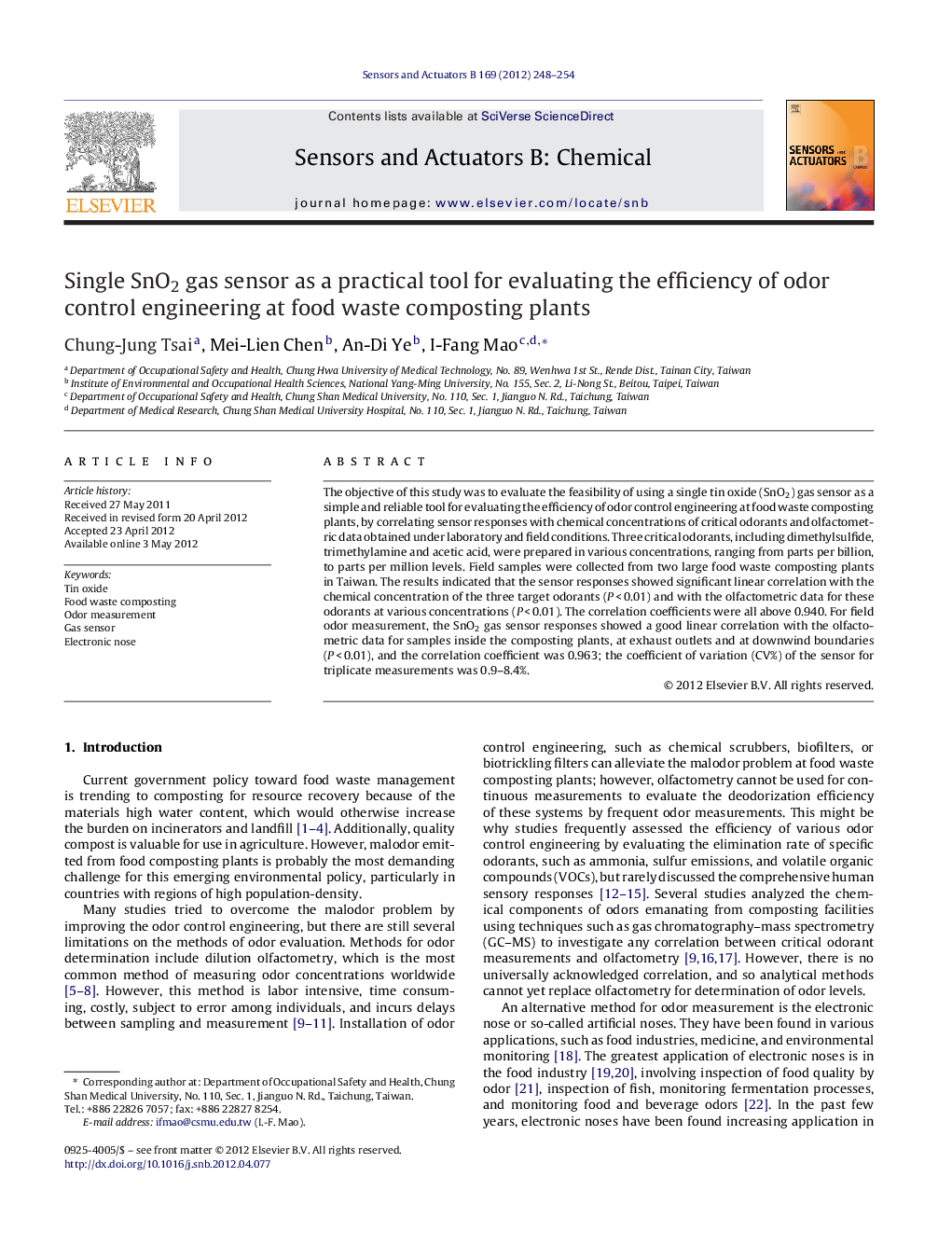| Article ID | Journal | Published Year | Pages | File Type |
|---|---|---|---|---|
| 7150039 | Sensors and Actuators B: Chemical | 2012 | 7 Pages |
Abstract
The objective of this study was to evaluate the feasibility of using a single tin oxide (SnO2) gas sensor as a simple and reliable tool for evaluating the efficiency of odor control engineering at food waste composting plants, by correlating sensor responses with chemical concentrations of critical odorants and olfactometric data obtained under laboratory and field conditions. Three critical odorants, including dimethylsulfide, trimethylamine and acetic acid, were prepared in various concentrations, ranging from parts per billion, to parts per million levels. Field samples were collected from two large food waste composting plants in Taiwan. The results indicated that the sensor responses showed significant linear correlation with the chemical concentration of the three target odorants (PÂ <Â 0.01) and with the olfactometric data for these odorants at various concentrations (PÂ <Â 0.01). The correlation coefficients were all above 0.940. For field odor measurement, the SnO2 gas sensor responses showed a good linear correlation with the olfactometric data for samples inside the composting plants, at exhaust outlets and at downwind boundaries (PÂ <Â 0.01), and the correlation coefficient was 0.963; the coefficient of variation (CV%) of the sensor for triplicate measurements was 0.9-8.4%.
Related Topics
Physical Sciences and Engineering
Chemistry
Analytical Chemistry
Authors
Chung-Jung Tsai, Mei-Lien Chen, An-Di Ye, I-Fang Mao,
